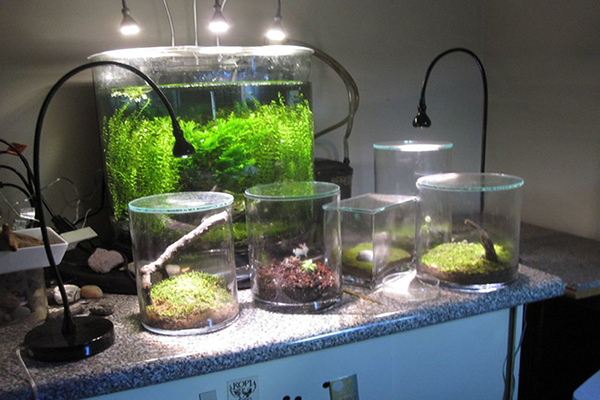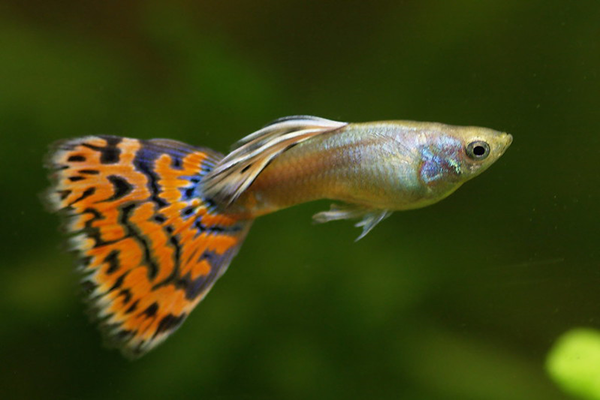Do Fish Need Light?
Posted by Miles Harrison on 04/23/2022
Introduction
In the aquarium hobby, there is an overwhelming amount of lighting options. Freshwater aquariums have standard fluorescent bulbs, compact fluorescent bulbs, metal halide lights, and LEDs. Saltwater aquariums use similar bulbs, and reef tanks that contain coral often have lights in the blue spectrum to cause coral fluorescence. We know the benefits of lighting on plants and corals, but in a natural environment where fish live at depths far below the surface, it begs the question, do fish really need light?

The answer is that it depends. Fish respond to the same circadian rhythms as other forms of biological life. Although fish do not sleep the same way that mammals do, fish will tend to rest in place, maintaining a level of alertness to protect from potential predators. While some fish rest during the nighttime, there are other species that rest during the daytime, nocturnal fish such as Soldierfish, Moray Eels, and Porcupinefish are known to be most active at night.
The Light Cycle
Ideally, most fish should experience a 12-hour light and dark cycle. In the aquarium hobby, aquarists seek to mimic the natural environment as closely as possible. Dedicated lighting systems provide an enjoyable experience for viewing fish, but as long as there is some sort of available light, whether it’s coming from a window, or from a lamp that’s turned on in the room, most fish will be perfectly content.
The Twilight Zone
So how do fish navigate deep in the ocean, where lighting is rare such as in the twilight zone? The answer is largely due to Neuromasts. Neuromasts are small receptor organs that appear on the surface of the skin. These lateral organs make up an interconnected network that stretches across the fish’s head and body. This network of organs aid in the perception of physical stimuli from potential predators. Comprised of hair cells, the system is able to detect motions in the water as well as changes in pressure.
Vision in Fish
Fish eyes also play a role in their perception of light. Their eyes have evolved to be efficient in low-light conditions. Fish eyes have rod and cone cells in their retinas. The spherical shape of a fish's eye gives them enhanced peripheral vision. Fish are able to see in color, and many species are able to see ultraviolet light. This form of enhanced sensory vision is used to their advantage at night when fish go into a dormant state.
Light Pollution
How does light pollution affect fish behavior? A recent study by the Max Planck Institute (MPI) for Human Development, along with collaborators at the Leibniz-Institute of Freshwater Ecology and Inland Fisheries (IGB), investigated the effect light pollution had on guppies. The experiment revealed some interesting results. Guppies were separated into three different groups, one group was exposed to low light levels at night, one had total darkness, and the last group was exposed to bright lighting. All 3 of these groups experienced the same level of light throughout the daytime. The groups of guppies exposed to lighting at night were observed to spend more time swimming in open areas. While this level of comfort poses no threat to a species in an aquarium setting, in the wild, swimming in an open area leaves the fish vulnerable to potential predators.

Measuring Light Intensity
So now that we’ve established that a 12-hour lighting cycle is beneficial to fish. How does light intensity play a role? Most freshwater aquarium lights are rated between 5,500 and 8,800 Kelvin. Freshwater aquariums with a high volume of plants often have extremely bright lights to increase the rate of photosynthesis in plants. But how does the light intensity affect aquarium fish? Most freshwater aquarium fish are native to freshwater lakes and streams which are not very deep. Reef aquarium fish are often native to the epipelagic zone, also known as the upper ocean. This zone begins at the surface and spans approximately 650ft below the surface.
Light intensity is often measured in PAR (Photosynthetically Active Radiation). PAR readings can be captured via a PAR meter, a small device that can produce values when placed under a light fixture. For freshwater planted aquariums, values between 10-30 PAR are considered low light, 30-80 are considered medium, and values 80-120 are considered high light. In a reef setting, high-light corals can demand levels of up to 200-400 PAR. While these readings seem high, in comparison, when the sun is directly overhead, natural sunlight PAR values can range from 900-1500μMol/m2/s.
The Effects of Light Intensity On Fish
So what does this mean for fish? The good news is that these aquarium PAR readings are still significantly lower than their natural environment equivalents. Freshwater fish and reef-safe fish native to the epipelagic zone should show no adverse reactions to these artificial light levels. As long as proper hiding places are provided for an aquarium's inhabitants, fish will easily adapt to an artificial lighting system.
Ideal Lighting Duration
How long should I leave lights on in an aquarium? The duration of lighting will often be based on an aquarium's inhabitants. Coral reef aquariums can have 6-12 hour lighting cycles. Advanced lighting fixtures have programmable light intensity, which can better match a natural light cycle. Planted freshwater aquariums, with high light and injected co2 often have a photoperiod somewhere in the range of 6-8 hours. Even though natural sunlight is available for much longer than a 6-8 hour period, sunlight does not maintain a level of intensity. This variation in light intensity can be replicated by using a programmable light intensity feature, or it can be configured by a timer, where the light period is limited in its duration.

Can Light Affect Fish Growth Rates?
One of the most studied fish species is the Atlantic salmon. Salmon is a very sensitive species, and it has been studied that their growth rates are stimulated by longer day lengths. So how does this occur? Studies have shown that there might be a correlation between increased hormone levels, which increases the efficiency of food conversion.
Conclusion
Like all things in nature, organic organisms have evolved to be as efficient as possible in their natural environments, and fish are no exception to this rule. Some fish can be quite hardy creatures, capable of adapting to a wide range of conditions. This proves to be true when it comes to lighting. Although most fish will be quite comfortable in low and high light conditions, maintaining a lighting routine that mimics the natural environment of the fish will provide an optimal experience. But if your power goes out for a few days while on vacation, you can rest assured that your aquarium fish will be perfectly fine until you turn the lights back on.
Additional Resources
https://www.sciencedirect.com/science/article/abs/pii/S0044848699000745
https://scholar.google.com/citations?user=bchg3EkAAAAJ&hl=en
December's Giveaways on Light Fish









